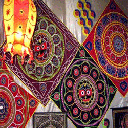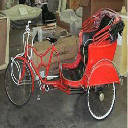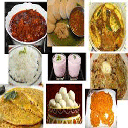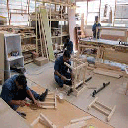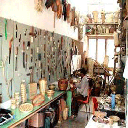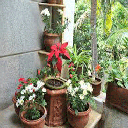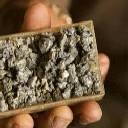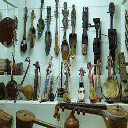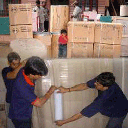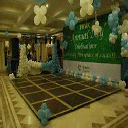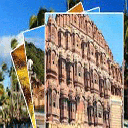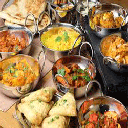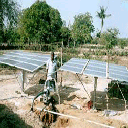Gujarat is a state in western India. with a coastline of 196077 sq km, most of which lies on the Kathiawar peninsula, and a population in excess of 50 million. The state is bordered by Rajasthan to the north, Maharashtra to the south, Madhya Pradesh to the east and the Arabian Sea as well as the Pakistani province of Sindh on the west. Its capital is Gandhinagar, while its largest city is Ahmedabad.it's the most convenient entry point of Gujarat is home to the Gujarati-speaking people of India. Gujarat has 4 National parks and 21 sanctuaries. Gujarat is the only home of Asiatic Lions.National parks include Vansda National Park, Blackbuck National Park, Velavadar and Marine National Park, Gulf of Kutch. Wildlife sanctuaries include: Wild Ass Wildlife Sanctuary, Nal Sarovar Bird Sanctuary, Porbandar Bird Sanctuary, Kutch Desert Wildlife Sanctuary, Kutch Bustard Sanctuary, Narayan Sarovar Sanctuary, Jessore Sloth Bear Sanctuary, Anjal, Balaram-Ambaji, Barda, Jambughoda, Khavda, Paniya, Purna, Rampura, Ratanmahal, and Surpaneshwar. Gujarat is one state where you can find major mountain-ranges of India. Aravalli, Sahyadri, Vindhya and Satpura are having their presence in Gujarat. Apart from this Gir hills, Barda, Jessore, Chotila etc. are situated in different parts of the Gujarat. Girnar is the tallest hill of Gujarat. Saputara is the only hill-station of the state. Narmada is the biggest river of Gujarat followed by Tapi, although Sabarmati covers the longest area in the state. Sardar Sarovar Project is built on Narmada river . Gujarat is the main producer of tobacco, cotton, and groundnuts in India. Other major food crops produced are rice, wheat, jowar, bajra, maize, Tur, and gram. Gujarat has an agricultural economy; the total crop area amounts to more than one-half of the total land area. Around more than 1000 festivals are celebrated in Gujarat—the state is known as the land of fairs and festivals. Some of the List of Festivals in Gujarat: Holi Navratri Dusshera Diwali Janmastami Raksha Bandhan International Kite Festival Modhera Dance Festival Saptak Music Festival Lili Parikrama Fair-The fair is attended by around 1 lakh people from all parts of India during the Hindu month of Kartik Sud 11 to 15.The parikrama is celebrated by worshipping Lord Shiva’s shrine at Bhavnath and people start walking on the identified tracks day and night.The entire Girnar hill pathways are lighted up and there are plenty of sadhumaths where people stop for a while to pay respect to these naga bavas and they continue walking enjoying the bhajan and raas mandlis and the folk music during the nights. Tarnatar Fair-Tribal Fair coinciding the wedding celebrations of Arjuna and Draupadi The Tarnetar fair is one of the most colourful events in the state of Gujarat. The fair coincides with the festival at the Trineteshwar temple (three-eyed god Shiva), celebrating the wedding of the legendary 'Mahabharatha' (epic) hero, Arjuna with Draupadi. It is believed that the Swayamwar (marriage) took place in Tarnetar after Arjun performed the Mastsyavedh, an unparalleled feat of archery. Bhadrapada ambaji mela-Ambaji Fair dedicated to Amba, Mother goddess is held in Banaskantha district. Shamlaji Fair-The fair at Shamlaji in the Sabarkantha district is a great occasion of mirth where Adivasis, especially Bhils and Gharasias in thousands gather. The two week long fair is also called Kartik Purnima. The 11th century Shamlaji temple here is dedicated to Vishnu. Vautha Fair-The fair held on the full moon day of the month of Kartika (November) at the confluence of seven rivers near the village Vautha, in the Ahmedabad the confluence is known as 'Saptasangam' and there is a famous Siddanath or Shiva temple here. Madhavrai Fair-Madhavrai Fair at Madhavpur near Porbandar is held to celebrate the marriage by elopement of Lord Krishna and Rukmini, on the 9th day of the bright half of the month Chaitra ( March/ April ) . Urs-The Urs at Shah Alam Roza in Ahmedabad and at Miran Datar in the Mehsana district are most important fairs for Muslims.
Hriday Kunj :The place where Mahatma Gandhi resided. Gandhiji initiated the movement of non violence and freedom struggle for India from this small house which is preserved as a national monument at Gandhi Ashram. A once upon a time heaven for untouchables, the ashram in Hriday Kunj of Gujarat still makes handicrafts,handmade paper and spinning wheels.Adjacent to the Hriday Kunj of Gujarat, there is a central library and a ‘Sight-and-sound’show is organized for visitors and tourists. You will find a vast prayer ground near Hriday Kunj which is of great historical importance. Adjacent to the Hriday Kunj, there is a Museum which is in the popular Ashram of Mahatma Gandhi and it preserves valuable articles and documents of the Indian nationalmovement. Lothal:History dates back to Indus Valley Civilization which leave behind the ruins of Lothal, the first Indian Port between 1800-2400 BC. It also shows a very high degree of town planning, like other sites in the Indus valley.The discovery of seals at Lothal suggests that the former civilization from this part of the Indian subcontinent traded frequently with the ancient civilizations of Mesopotamia, Egypt and Persia. An unusual discovery was made here of two bodies found in a single grave. At least three such instances show that double burial was a common feature among the people who lived in Lothal. More than 4000-year-old seals of the Indus Valley and Sumerian civilizations, terracotta artefacts, ancient beads and necklaces made from colourful semi-precious stones, resembling modern day junk jewellery, among others is being brought alive in the minds of the people by the Archeology survey of India. Thus, Lothal is an emerging Tourist attraction in Gujarat. Kirti Mandir:A national monument, as it happens to be the birthplace of Mahatma Gandhi. This place has some religious importance, as it is also the birthplace of the legendary character Sudama, who was supposed to be Lord Krishna's best friend.. Vadnagar:Vadnagar is famous for its torans and Hatkeshwar Temple. Torans, a pair of 12th century columns supporting an arch, about 40 feet tall built in red and yellow sandstone, just north of the walled town. They stand majestically on the bank of Sharmistha Talav, on a road going down from Arjun Bari. They are among the few surviving examples of the entrance gates, once a regular feature of the architecture of Gujarat in Solanki period. The carving style is similar to the Rudra Mahalaya at Sidhpur.Perhaps erected after a war victory, the architecture is embellished with carvings of battle and hunting scenes. The one to the east is in better condition and has been used as a symbol of Gujarat in recent times. The torans might have served as an entrance to a large temple complex, but there are no remains found here.The Hatkeshwar temple is a 17th Century carved temple at the entrance of the town. The family deity of Nagar Brahmins, who were once a prominent community in Vadnagar. The temple's inner sanctum houses a Shiva linga said to have self-emerged (swayambhu). From the roof of the sanctum a massive shikhar soars high into the sky. Facing east, the temple is enclosed by a high wall topped by three circular domes interspersed with flat stretches in the Indo-Saracenic tradition.The exterior of the temple is exquisitely ornamented with figures of the nine planets, musicians, evocative dancing apsaras, regent deities, the chief gods of the Hindu pantheon, scenes from the Ramayana and Mahabharata, and varied animal and floral motifs. The premises also have an ancient Kashivishveshvara Shiva temple, a Swaminarayan temple and two Jain temples. Dholavira:Dholavira site, an ancient metropolitan city in Gujarat has been voted as one of the Seven Wonders of India. Dholavira located in Kutch, in Gujarat was an Indus Valley settlement known for its sophisticated urban planning and architecture. Dating back to 2900 BC, all the buildings are almost exclusively built out of brick. Dholavira has sophisticated water conservation systems, possibly the oldest in the world.Champaner-Pavagadh:Champaner-Pavagadh is promoted as World Heritage site with developments on move as modern tourism destination. GoG promotes tourism to Champaner-Pavagadh site along with other tour packages such as travel spots at Nimetabag, the Azwa lake, Jambughoda Sanctuary and Dhaboi. Pavagadh along with Champaner and Machi is a UNESCO world heritage site. This site reflects grand historical confluence, displaying 1,200 years of history and culture. It is believed to bear testimony to the Indian Puranic ages, the Rajput saga, the glory of the reign of the Marathas, the Islamic influences and finally lays proof to the British occupation within its remains. The 15th Century Muslim influence as muslim period began with Muhammad Begada defeating the Patai Raval clan that was ruling the area, and strategically moving his capital from Ahmedabad to the Champaner site. Gateway to Panchmahal, 46 kms away from Vadodara (Baroda), it is a tribal area populated predominantly by the Bhils. The government has granted many concessions and offers subsidies to the new industries coming up in this area.


